| Plecos |
 |
| |
Loricariidae is the largest family of catfish, with
almost 700 species and new species being described each year. Loricariids
are found in freshwater habitats of Costa Rica, Panama, and tropical
and subtropical South America. These fish are noted for the covering
of bony overlapping plates covering their bodies and a suckermouth.
Members of the family Loricariidae are commonly referred to as suckermouth
armoured catfishes, or plecos; a shortened form of the species name
plecostomus. Most species are found in swift-flowing streams from
the lowlands. They can also be found in a variety of other freshwater
environments such as torrential mountain rivers, quiet brackish estuaries,
black acidic waters, and even in subterranean habitats. This family
has extremely variable color patterns, body shapes, and can range
from 1 inch in some dwarf species to over 30 inches in larger species
such as Panaque.
The suckermouth exhibited by these catfish allow them to adhere to
objects in their habitats, even in fast-flowing waters. The mouth
and teeth also are adapted to feed on a variety of foods such as algae,
invertebrates, and detritus. Some species, notably the Panaque, are
known for their ability to digest wood. Most species of Loricariids
are nocturnal animals. Some species are territorial, while others,
such as Otocinclus, prefer to live in groups. Air breathing is well
known among many loricariids. The ability to breathe air is dependent
on the risk of hypoxia faced by a species; torrent-dwelling species
tend to have no ability to breathe air, while low-land, pool-dwelling
species such as those of Hypostomus have a great ability to breathe
air. Loricariids exhibit a wide range of reproductive strategies,
including cavity spawning, attachment of eggs on the underside of
rocks, and egg-carrying. Parental care is usually well-developed and
the male guards the eggs and sometimes the larvae. The eggs usually
will hatch between 4 and 20 days, depending on the species.
The 'Catfish/Pleco' world is a very complicated one. There are too
many species with too many variations. A particular genus many have
one or many L-numberings with only a slight difference in body color,
patterns, origin, etc. We are not a pleco website and will not attempt
to display all the plecos here, but instead, will we display the ones
we can get. All of our plecos come from Brazil and Peru, some are
bred in captivity and others are wild caught. To simplify things,
I have grouped the plecos we sell in a couple of categories, namely,
'Dwarf + Bristlenose Pleco', 'Spotted Pleco', 'Striped Plecos', and
lastly 'Whiptail Catfish and Others'. If you're looking for a particular
type of pleco not on our website then give us a call, we have access
to much more.
|
| |
| |
| Dwarf Plecos + Bristlenose Plecos |
| |
| LDA23 Dwarf Sucker Otocinclus
(小精靈) |
 |
| Otocinclus vittatus |
| |
|
|
 |
| |
| Zebra Oto (班馬小精靈?) |
 |
| Otocinclus cocama |
| |
|
|
 |
| |
| LDA25 Goby Pleco (達摩精靈) |
 |
| Parotocinclus jumbo |
| |
|
|
|
| |
| |
| Dwarf Bristlenose Pleco (小狐子) |
 |
| Ancistrus temminckii sp. |
| |
|
|
 |
| |
| Gold Bristlenose Pleco (金鬍子) |
 |
| Ancistrus temminckii sp. "Gold" |
| |
|
|
 |
| |
| Alligator Dwarf Pleco |
 |
| Parotocinclus britskii |
| |
|
|
|
| |
| |
| Dwarf Pleco sp (貓眼狐子) |
 |
| Glyptoperichthys sp. |
| |
|
|
 |
| |
| Gold Bristlenose Pleco "Longfin"
(長鰭金鬍子) |
 |
| Ancistrus temminckii sp. "Gold
Longfin" |
| |
|
|
 |
| |
| Albino Bristlenose Pleco "Longfin"
((長鰭白鬍子) |
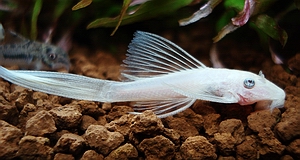 |
| Ancistrus sp. "Albino Longfin" |
| |
|
|
|
| |
| |
| Dwarf Pleco sp "Starlight"
(星星鬍子) |
 |
| Ancistrus sp. |
| |
|
|
 |
| |
| Dwarf Pleco sp "Leopard Skin" |
 |
| Peckoltia sp from Peru |
| |
|
|
 |
| |
| L255 Spotted Medusa Pleco (希臘眾神大鬍子異形) |
 |
| Ancistrus sp. |
| |
|
|
|
| |
| |
| L180 Blue Spot Bristlenose (瑪拉荷藍鑽大鬍子異形) |
 |
| Ancistrus sp. |
| |
|
|
 |
| |
| L034 Medusa Pleco (大頭鬍子異形) |
 |
| Ancistrus ranunculus |
| |
|
|
 |
| |
| L213 Snow Bristlenose Pleco (細雪大鬍子) |
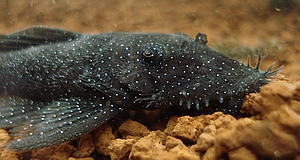 |
| Ancistrus sp. |
| |
|
|
|
| |
| |
| Spotted Plecos |
| |
| L177 Gold Nugget Pleco (黃翅黃珍珠異形) |
 |
| Baryancistrus sp. |
| |
|
|
 |
| |
| LDA33 Snow Ball Pleco (大雪球異形) |
 |
| Baryancistrus sp. |
| |
|
|
 |
| |
| L254 Blue Inspector Pleco (藍星小丑豹異形) |
 |
| Spectracanthicus sp. |
| |
|
|
|
| |
| |
| L174 Panda Pleco (新熊貓異形) |
 |
| L174 Panda Pleco (新熊貓異形) |
| |
|
|
 |
| |
| L124 Para Pleco (黃金美洲豹異形) |
 |
| Peckoltia sabaji |
| |
|
|
 |
| |
| L163 Big Spot Peckoltia sp (橘翅美洲豹異形) |
 |
| Peckoltia sp. |
| |
|
|
|
| |
| |
| L048 Big Gold Spot Pleco (金莎達摩異形) |
 |
| Scobinancistrus cf. pariolispos
|
| |
|
|
 |
| |
| L128 Blue Phantom Pleco (藍寶石) |
 |
| Hemiancistrus sp. |
| |
|
|
 |
| |
| L200 Green Phantom Pleco (綠寶石) |
 |
| Hemiancistrus subviridis |
| |
|
|
|
| |
| |
| L264 Sultan Pleco (老鼠斑異形) |
 |
| Leporacanthicus joselimai |
| |
|
|
 |
| |
| L160 Coffee & Cream Pleco
(黑星坦克, 黑點坦克) |
 |
| Pseudacanthicus spinosus |
| |
|
|
 |
| |
| L014 Sunshine Pleco (黃金達摩異形) |
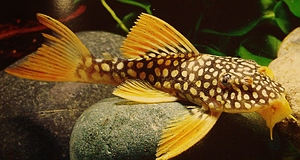 |
| Scobinancistrus aureatus |
| |
|
|
|
| |
| |
| L273 Titanicus Pleco (金達尼坦克) |
 |
| Pseudacanthicus sp. |
| |
|
|
 |
| |
| L091 Dragon Fin Pleco (彩鰭坦克) |
 |
| Leporacanthicus triactis |
| |
|
|
 |
| |
| L252 Gold Spot Ancistrini (滿天星小丑豹異形) |
 |
| Ancistrini sp. |
| |
|
|
|
| |
| |
| Striped Plecos |
| |
| L046 Zebra Pleco (熊貓異形) |
 |
| Peckoltia sp. |
| |
|
|
 |
| |
| L236 King Tiger Zebra Pleco (皇后虎斑以異形) |
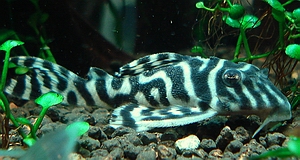 |
| Hypancistrus sp. |
| |
|
|
 |
| |
| L260 Queen Arabesque Pleco (皇后迷宮異形) |
 |
| Hypancistrus sp. |
| |
|
|
|
| |
| |
| L318 Mosaic Zebra Pleco (白金迷宮異形) |
 |
| Hypancistrus sp. |
| |
|
|
 |
| |
| LDA01 Gold Stripe Panaque (黃老虎異形) |
 |
| Panaque sp. |
| |
|
|
 |
| |
| L134 Leopard Frog Pleco (黃金斑馬異形) |
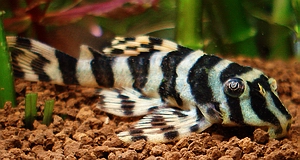 |
| Peckoltia sp. |
| |
|
|
|
| |
| |
| LDA22 Clown Pleco (橘邊珍珠異形) |
 |
| Panaque maccus |
| |
|
|
 |
| |
| L027 Red Fin Royal Pleco (申古白金皇冠豹) |
 |
| Panaque sp. cf. nigrolineatus`xingu`
|
| |
|
|
 |
| |
| L305 Worm Line Pleco (陶瓷娃娃異形) |
 |
| Peckoltia braueri |
| |
|
|
|
| |
| |
| L047 Mango Pleco (金霸王) |
 |
| Baryancistrus sp. |
| |
|
|
 |
| |
| L191 Dull eyed Royal Pleco (綠皮皇冠豹)((西瓜) |
 |
| Panaque sp. |
| |
|
|
 |
| |
| L037 Brown Snake Skin Pleco (蛇皮異形) |
 |
| Hypostomus sp. |
| |
|
|
|
| |
| |
| Whiptail Catfish and Others |
| |
| L010A Red Whiptail Catfish (紅色直昇機) |
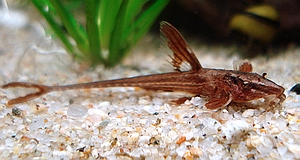 |
| Hemiloricaria sp. |
| |
|
|
 |
| |
| Whiptail Catfish |
 |
| Sturisoma festivum |
| |
|
|
 |
| |
| L010 Loricaria lata |
 |
| Loricaria lata |
| |
|
|
|
| |
| |
| Number of visitors:
|
| |













































